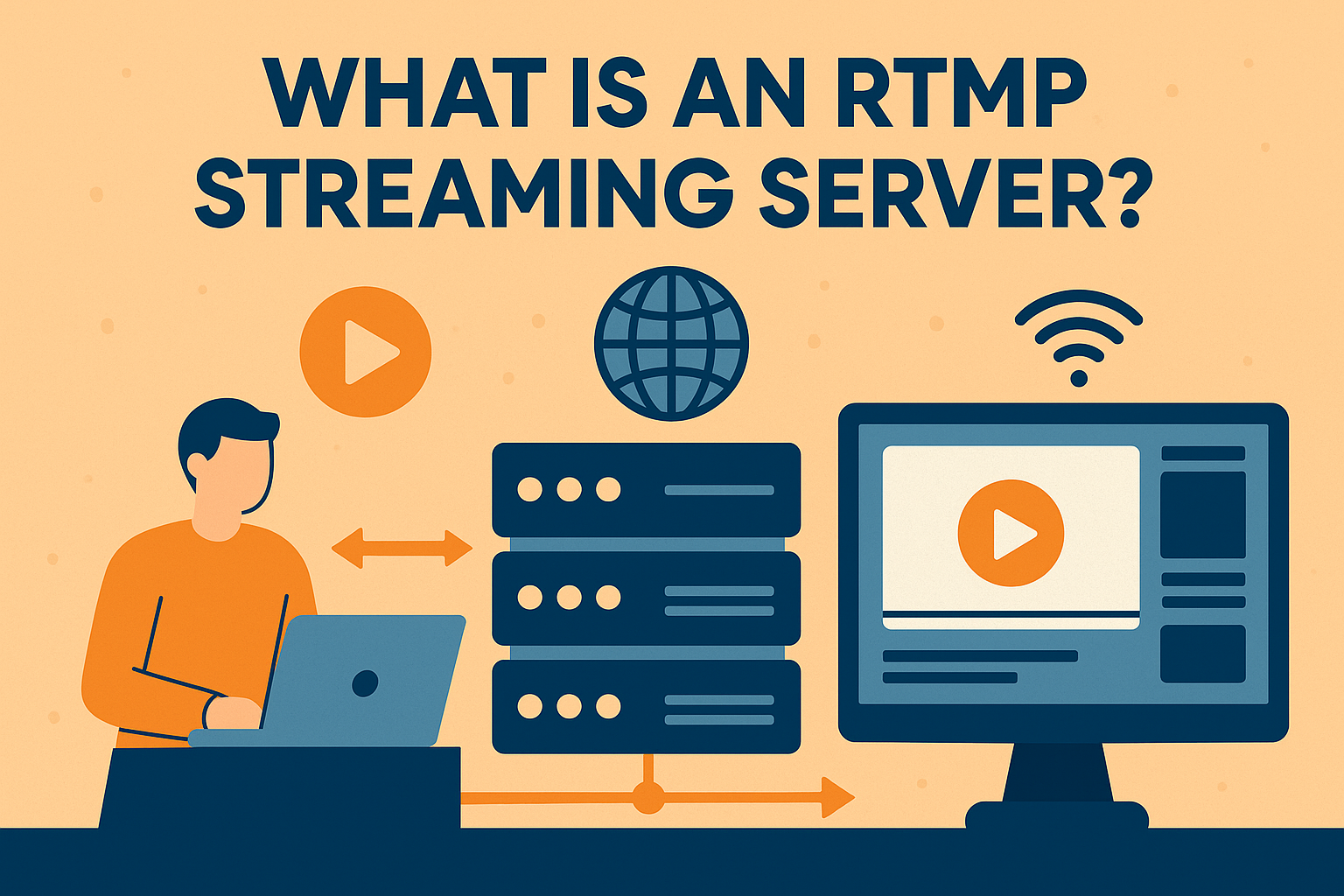Most streamers start with CPU encoding, but once you add scenes, overlays, and multi-bitrate outputs, the CPU can’t cope. GPUs are designed for this load.
CPU encoding
Precise and consistent. Best for single channels or VOD.
GPU encoding
Perfect for multiple live feeds. Example:
-c:v h264_nvenc -preset p5 -rc:v vbr -b:v 5000k -maxrate 6000k
You’ll maintain constant quality with less heat and power use.
RTMP pipeline
A Wowza-powered RTMP streaming server keeps latency under two seconds and supports adaptive renditions.
Hosting tip
Check Red5Server.com for GPU-ready dedicated servers with FFmpeg and Wowza preinstalled.
Internal: ffmpeg-hosting.org (HLS fallback).
External: NVIDIA Video Codec SDK.
The decision between using a Central Processing Unit (CPU) and a Graphics Processing Unit (GPU) for video encoding on an RTMP streaming server is one that fundamentally dictates the scalability and real-time performance of a live operation. Many initial streaming setups rely on CPU encoding, which excels at being precise and consistent, making it perfectly adequate for single-channel broadcasts or Video-on-Demand (VOD) processing where time is not of the essence. However, the CPU is a general-purpose workhorse, and its resources are quickly overwhelmed when the complexity of the live stream increases. A modern broadcast often requires more than simple single-stream encoding; it involves processing multiple dynamic elements like layered scenes, graphical overlays, and, most critically, generating multi-bitrate outputs for Adaptive Bitrate (ABR) delivery. These tasks, especially simultaneous encoding of four or more renditions (e.g., 1080p, 720p, 480p, 360p), constitute a parallel processing load that the CPU is not architecturally designed to handle efficiently. When the CPU bottleneck is hit, performance degrades rapidly, resulting in dropped frames, encoder lag, and the inevitable stuttering that ruins the viewer experience. The advent of dedicated hardware encoding via GPUs, particularly with technologies like NVIDIA NVENC or Intel Quick Sync Video (QSV), has provided the necessary specialized power. GPUs are built with thousands of cores designed for parallel tasks, making them perfectly suited to the repetitive, high-volume computational demands of real-time video encoding, thereby revolutionizing live performance, especially for demanding scenarios like 1080p quality under pressure.
The true power of GPU encoding is realized in its ability to manage multiple concurrent live feeds while offering superior efficiency compared to its CPU counterpart. When deploying GPU encoding through FFmpeg, a dedicated hardware encoder like h264_nvenc is specified, along with highly optimized parameters such as -preset p5 -rc:v vbr -b:v 5000k -maxrate 6000k. The use of preset p5 (a quality-focused preset from the NVENC SDK) and Variable Bitrate (vbr) control ensures that the encoder dynamically allocates bits to maintain a high, constant quality without exceeding the set maximum bitrate (6000k). Crucially, this high-performance encoding process is executed on the GPU’s dedicated silicon, offering multiple benefits beyond pure speed. Hardware encoding significantly reduces the system’s overall thermal output and power consumption, making it a more cost-effective and environmentally friendly option for large-scale server deployments. By offloading the encoding task, the server’s primary CPU is freed up to manage other essential tasks of the RTMP pipeline, such as ingest management, client authentication, and server-side logic. The integration with a robust server platform, such as one powered by Wowza, ensures that this encoded stream is efficiently delivered, supporting adaptive renditions and maintaining a competitive, low latency under two seconds, which is a crucial benchmark for high-stakes live events like sports or gaming. This cohesive pipeline—where the GPU handles the encoding and the server manages the delivery—is the blueprint for a scalable, professional streaming operation.
Selecting the right power source is only half the battle; the performance of an RTMP streaming server ultimately hinges on the quality of the hosting infrastructure that supports GPU acceleration and FFmpeg. A dedicated server environment is often mandatory to guarantee the specialized resources needed for multiple, high-bitrate live streams. This is where specialized providers, as highlighted by the hosting tip to check for GPU-ready dedicated servers with FFmpeg and Wowza preinstalled, become invaluable. These environments are engineered from the ground up to support the intensive I/O operations and sustained computational loads required by concurrent hardware encoding. The pre-installation of tools like FFmpeg eliminates complex setup, and the integration with a professional server like Wowza means the critical components of the delivery chain—from ingest to Adaptive Bitrate (ABR) switching—are already optimized. Furthermore, a professional streaming setup requires robust redundancy, often necessitating an HLS fallback mechanism, as referenced in the internal documentation. While RTMP provides the critical low-latency link from the encoder to the server, HLS (HTTP Live Streaming) is the pervasive protocol for final delivery to a broad range of client devices, especially mobile browsers. A truly high-performance RTMP server must use FFmpeg to encode and package streams into both RTMP for ingest and ABR HLS for distribution, ensuring maximum compatibility and reliability. Therefore, moving from basic CPU encoding to dedicated GPU power, housed within a specialized, optimized, and redundant hosting environment, is the necessary transition for any streamer aiming to achieve professional-grade quality and scalability.

